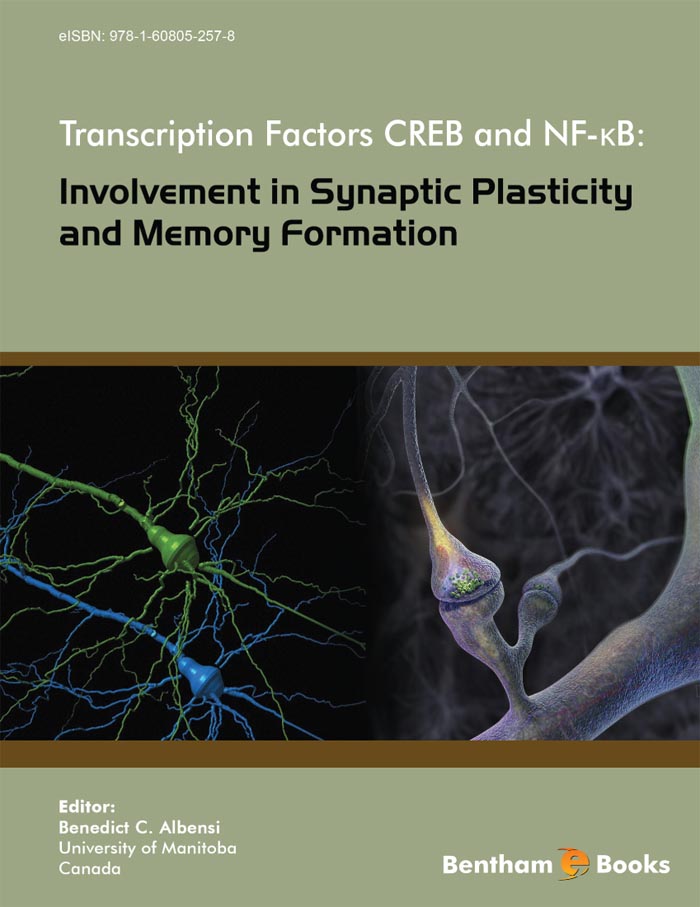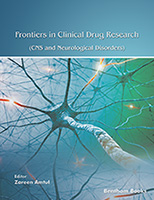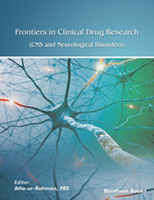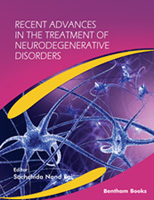Preface
Transcription factors are specialized proteins that bind to specific DNA sequences, thereby controlling the movement (a.k.a. transcription) of genetic information from DNA to mRNA. In so doing, transcription factors can promote or repress the recruitment of RNA polymerase to specific genes thereby regulating gene expression.
Synaptic plasticity is the capacity of the connections between neurons to change in strength in response to alterations in synaptic transmission and other cellular signals. So-called plastic change is possible as a result of several mechanisms that function co-operatively in the synaptic region and results in morphological change. The formation of memory is theorized to be associated with and driven by mechanisms of synaptic plasticity.
The main aim of the authors for this book was to critically survey the role of two recognized transcription factors in processes of synaptic plasticity and memory. In addition, the authors provided recent data from their own labs and in some cases provided a perspective relevant to specific CNS diseases and potential drug targets. Historically, the transcription factor cAMP response element-binding (CREB) has been the most well documented transcription factor shown to play a role in synaptic plasticity and memory. CREB has several functions, but its most notable function has to do with the formation of long-term memories where knock out of this protein not only impairs memory, but also has a negative effect on cell survival. More recently, other transcription factors, such as CCAAT/enhancer binding protein (C/EBP), early growth response (Egr) protein, activator protein 1 (AP-1), and nuclear factor kappa B (NF-κB) have been implicated in synaptic plasticity and memory as well. Of these, scientific literature on NF-κB’s theorized role in synaptic plasticity and memory is growing rapidly. Interestingly, in some recent studies CREB and NF-κB have also been shown to interact with each other where both contribute in a cooperative fashion to the initiation of gene expression.
This book is divided into seven chapters. In the first two chapters, CREB is reviewed and roles for this protein are evaluated not only in normal long term memory, but also in a context of memory impairment in disease states such as Alzheimer’s disease (chapter one), Rubinstein-Taybi syndrome (chapter one), and some neuropsychiatric disorders (chapter two), etc. The third chapter serves as a bridge for our two highlighted transcription factors, where the author presents a synthesized discussion of the literature on CREB and NF-κB and also on other transcription factors that are relatively unrecognized at the time of this writing. In the fourth chapter, the potential role of NF-κB in synaptic plasticity and memory is discussed and recent evidence for its participation from several models is presented. In chapter five, a more specific role for NF-κB is considered that involves adult neurogenesis. The sixth chapter discusses NF-κB and specific mechanisms of transcriptional regulation and puts into perspective how NF-κB may play a role in several forms of memory including, memory consolidation, reconsolidation and extinction.
The final chapter serves well not only to summarize and question NF-κB’s role in synaptic plasticity and memory, but also to point out important technical considerations that may have influenced (rightly or wrongly) many past studies in this field.
We are living in an exciting time for memory research. The last several decades have seen an explosion in scientific data and literature that have contributed to our understanding of the neurological basis of memory. In spite of this plethora of information many outstanding questions still remain: What processes underlie the formation of new memories and the establishment of long term memory? What mechanisms determine the strength of memory? Which molecules play essential roles in these processes? How do the transcription factors CREB and NF-κB contribute to processes of long term memory? The chapters in this book attempt to address some of these most interesting, but unanswered questions.
Benedict C. Albensi, Ph.D.
University of Manitoba
Canada









